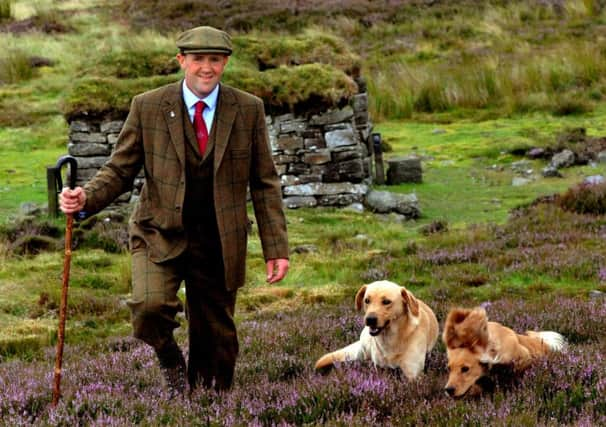Special lure of the Yorkshire Dales landscape: An unlikely alliance on the grouse moors


A survey conducted in the Dales by the British Trust for Ornithology has concluded that the answer to maintaining populations may lie with gamekeepers on moors managed for grouse shooting.
The organisation has published its report of a pilot project in Wensleydale, within the Yorkshire Dales National Park, in which gamekeepers and farmers were asked to observe breeding waders and monitor the hatching success of nests.
Advertisement
Hide AdAdvertisement
Hide AdIt revealed high densities of breeding curlew, golden plover, lapwing, redshank and snipe in the upland farms and moorland that made up the project area.
Some 34 nests were monitored with cameras and temperature sensors to record the hatching of eggs or their failure to hatch. Chicks were successfully hatched in six out of ten nests.
Surveyors asked gamekeepers on the Bolton Castle Estate, near Leyburn, to monitor breeding waders in the course of their routine duties, and found their work to be “very similar” to that of independent ornithologists.
The report admits that gamekeepers and upland farmers had been overlooked as volunteers on previous surveys of wading birds, often because of the remoteness of their land.
Advertisement
Hide AdAdvertisement
Hide AdThe new report, which has been presented to the Dales National Park Authority, has been welcomed by the Moorland Association, whose members manage 860,000 acres of heather moorland in England and Wales for wild red grouse.
Its director, Amanda Anderson, called the findings “hugely encouraging” at turning gamekeepers into “citizen scientists” in gathering information on breeding waders.
She added: “It is also very heartening to see the reputation of grouse moors as strongholds for a wide range of waders is underpinned by the findings.”
Other research has found that in moorland areas where gamekeepers control foxes, crows, stoats and other predators, there are up to five times as many waders, which have a three times better chance of hatching their chicks.
Advertisement
Hide AdAdvertisement
Hide AdThe new report recorded no fox or small mammal activity and only one attack by crows.
It recommends that gamekeepers now be asked to monitor breeding waders as part of their regular work practices.
David Jarrett, who led the project for the British Trust for Ornithology, said: “Gamekeepers interested in carrying out breeding wader surveys may be able to generate data comparable to that of experienced field workers, if good guidance and training is made available.”
At the Bolton Castle estate, a spokesman said: “Moorland gamekeepers have a wealth of knowledge and field skills and are very proud of the assemblage, abundance and success of ground nesting birds on their patch.
Advertisement
Hide AdAdvertisement
Hide Ad“Harnessing this motivation to record what they see whilst going about day to day duties has been a relatively simple and enjoyable step that could be rolled out to other areas.”
Ian Court, wildlife officer at the National Park Authority, said: “The enthusiastic way in which the gamekeepers took to monitoring is really encouraging.
“Those that took part in this research already knew a lot about the birds and could distinguish between different species, calls, songs and behaviours.
“As gamekeepers are on the moor for a significant proportion of their working day, they are ideally placed to help survey breeding waders.”